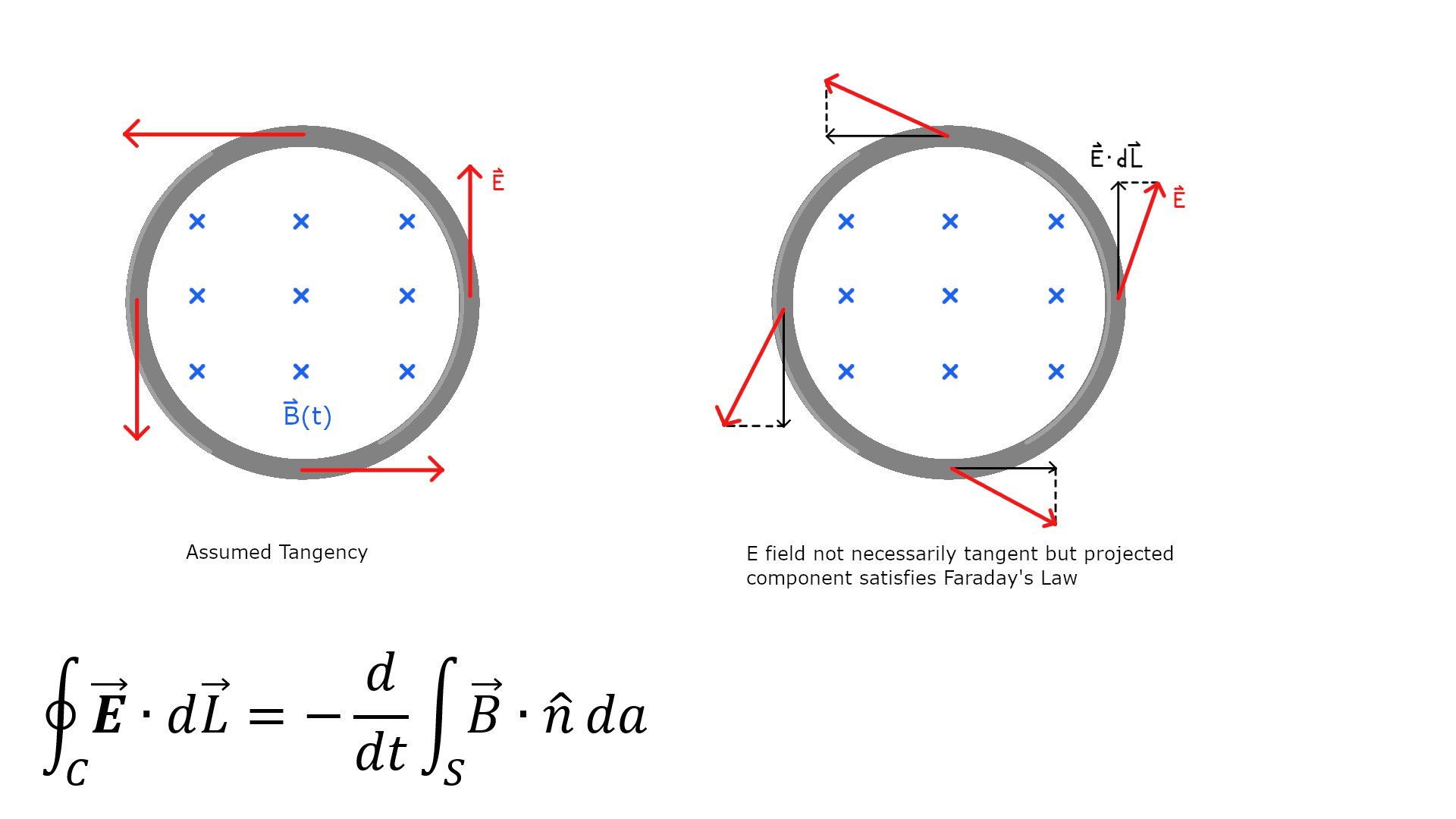I have been going through A Student's Guide to Maxwell's Equations and am looking at Faraday's Law but am confused about why there always seems to be an assumption that the induced field is tangent to a given loop. I included a diagram to illustrate. The left hand side of the equation is the dot product of the induced electric field and the differential element dL but to me this only specifies that the parallel component is summed and that the actual direction of the field is free to point in any direction so long as there is some non zero component tangent to the ring.
Also another issue I see is that if we consider this same ring in two different positions it seem like we can create contradictory fields where the electric field can take on more than one value at a point.
The overarching question here is how is the induced electric field actually calculated? Is it possible with just Faraday's law or is there additional information required such as the tangency assumption?


